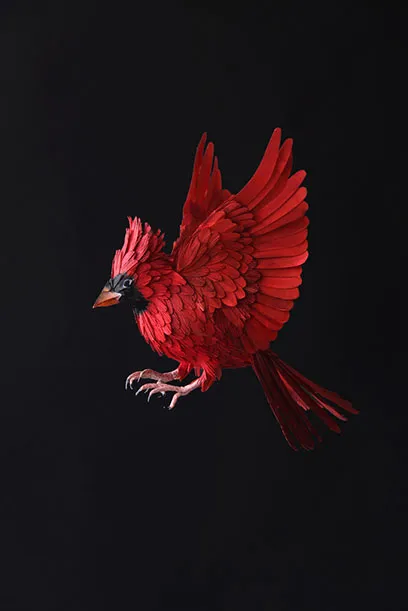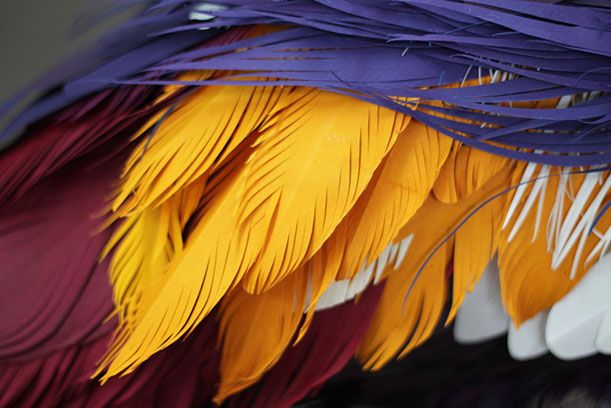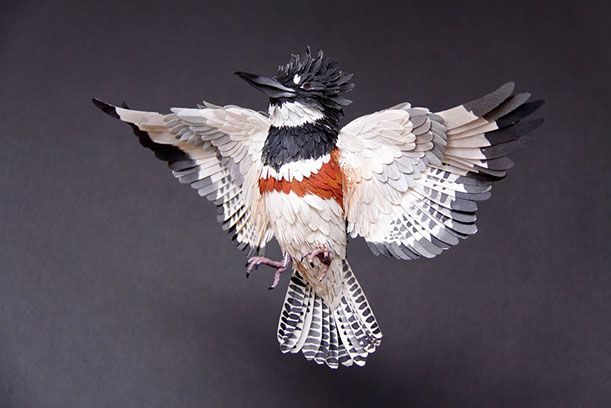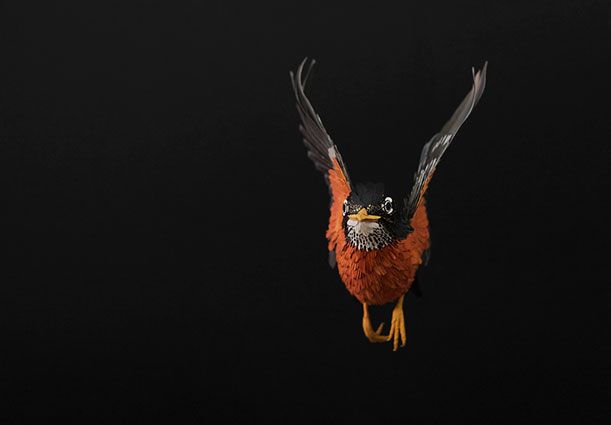Diana Beltran Herrera’s Flock of Paper Birds
We are not talking origami here. The Colombian artist has created paper sculptures of more than 100 species, and they are startlingly realistic
/https://tf-cmsv2-smithsonianmag-media.s3.amazonaws.com/filer/Collage-Arts-Sciences-paper-birds.jpg)
Diana Beltran Herrera had a realization a couple of years ago. “I started to feel closer to nature, but more, I recognized that I was in nature living at the same time as others, and I wasn’t any more special than any other element,” says the Colombian artist.
A bit conflicted, she says, “I had this knowledge of things living around me, but did I really know about them? I decided that it was time to play again, to rediscover the place where I was living.”
Herrera’s explorations began with birds. She observed local birds in her city of Bogotá and did Internet research on these species, identifying them and learning about their behavior and habitat. The artist also met with members of an ornithology group that provided more information.
“I discovered that I was living in a city full of nature, but somehow the traffic and modernism never allowed me to see what was living in there,” says Herrera. “With time, I started to find those plants, animals and life in general and felt astonished about each single thing, but the most recurrent animal was always the bird.”

Feeling inspired, Herrera started to cut paper into feathers and construct hyper-realistic sculptures of birds. In just a short time, she has created an her own aviary complete with more than 100 species found around the world, from lineated woodpeckers, Bateleur eagles and European bee eaters to blue herons, flamingos, cardinals, blue jays, robins and warblers. The artist’s first international solo exhibition, “Diana Beltran Herrera: Birds of Florida,” featuring seven new sculptures of the state’s birds, is now on display at the Cornell Fine Arts Museum in Winter Park, Florida.
To represent the birds as they are in nature, Herrera makes her sculptures life-size. For a cardinal, that might translate to just over six sheets of paper and five days of labor. An eagle or a crane, on the other hand, means 10 to 15 sheets of paper and up to two weeks of time. She observes some of the species in the wild, studies photographs of birds, and confers with ornithologists and birding groups to ensure an impressive level of visual accuracy.

Then she begins, first with a base form made out of paper, on which she carefully pastes meticulously cut paper feathers. The feathers themselves—mostly delicate bits of Canson art paper scored finely with scissors—range from lightweight wisps to stubby fronds and spikes, depending on the species of bird and their position on the creature. The result is something so stunningly close to the real thing, you’re shocked not to see it move.

Although her work is awe-inspiring in its detail, the real wonder is the complexities seen in nature, Herrera explains. “The most amazing thing for me is to go and find these birds in the wild,” she says. “I feel like a kid still with this need to discover. I love to feel this surprise and enjoy this experience in a mature way that I did when I was a child.”
At the top of her list of birds she would like to see in the wild is a kingfisher. “I have been looking for one, but it is difficult to find,” she says.
When choosing a bird to make her subject, Herrera focuses on its movement. “It is the most important thing for me,” she says. “When I started this project, I was trying to find a way to communicate with this other part . Having knowledge that there wasn’t a language in common, there was a challenge to understand this life in another way. I realized there was this corporal expression, this dance, that could tell me a story about them.” She always looks for a photograph to reference, where the bird seems to be at its liveliest.

On her website, Herrera describes her work as seeking “to explore the chillingly disengaged relationship between humans and nature in modern society.” She deeply hopes that her paper sculptures of birds can affect this relationship for the better.
“People say that a little action can bring a reaction, and I like to think that this is possible. I wonder if people could appreciate the real world as they appreciate art, things could be different,” says Herrera. “My work is nothing different or new, it is just a representation of something that is real, and somehow it has an impact. More than creating birds, the real aim of what I do is to use this work as a model to exercise a behavior. It is an invitation to rediscover what is there, to see further and understand we are not alone here. We are part of a big system, and, as that, we need to learn how to respect and relate.”
“Diana Beltran Herrera: Birds of Florida” is on display at the Cornell Fine Arts Museum, on the campus of Rollins College in Winter Park, Florida, through December 8, 2013.
/https://tf-cmsv2-smithsonianmag-media.s3.amazonaws.com/accounts/headshot/megan.png)
/https://tf-cmsv2-smithsonianmag-media.s3.amazonaws.com/accounts/headshot/megan.png)